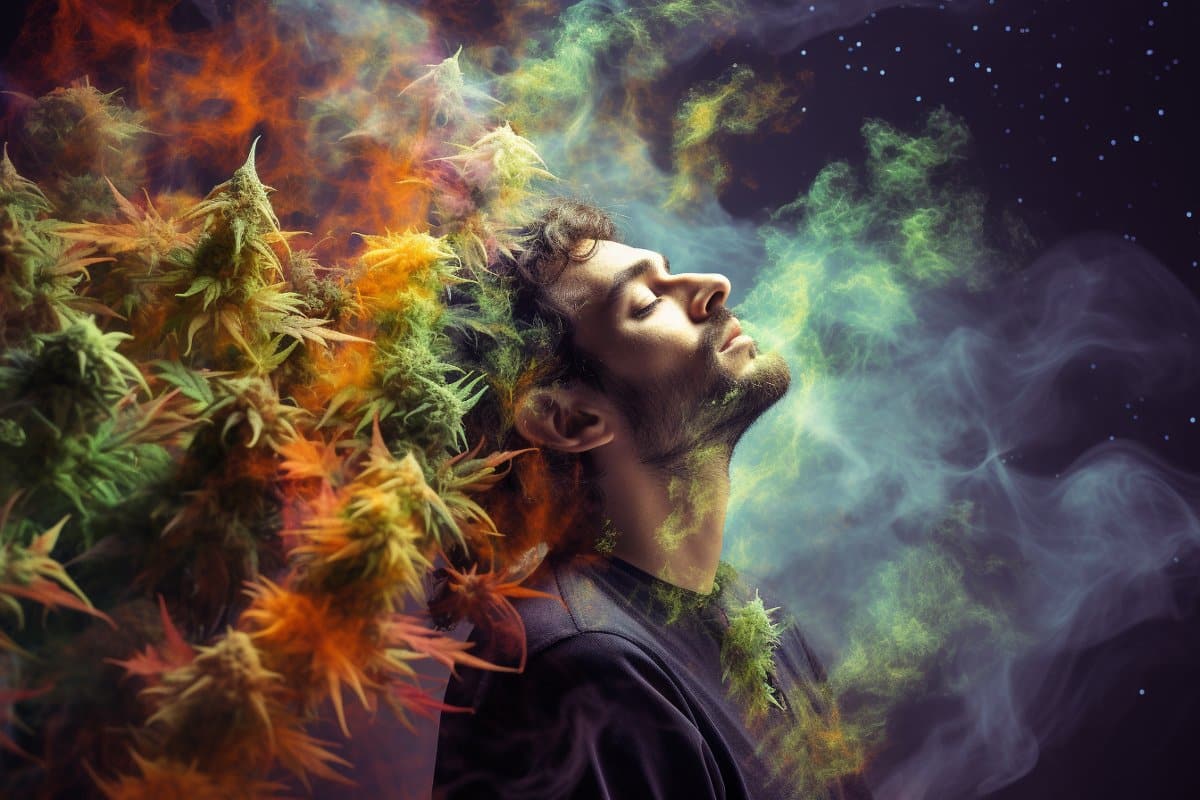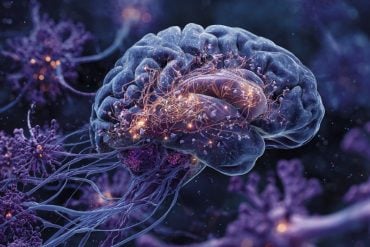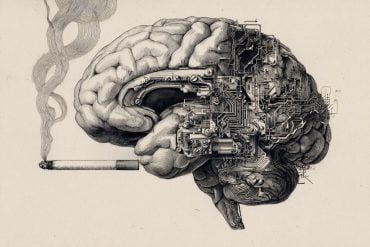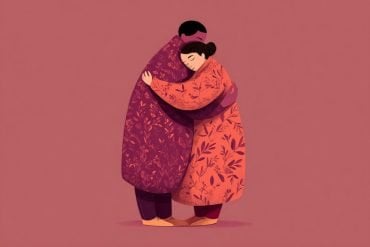Summary: A comprehensive study found a significant association between emergency department visits for cannabis use and the development of new anxiety disorders.
Analyzing health data from over 12 million Ontarians, the research revealed that individuals who sought emergency care for cannabis use exhibited a nearly fourfold increase in the risk of being diagnosed with an anxiety disorder within three years, compared to the general population. Additionally, the study highlights the potential for cannabis use to exacerbate existing anxiety symptoms.
These findings underscore the complexities of cannabis use and its impact on mental health, challenging the perception of cannabis as a benign substance and pointing to the need for caution in its medicinal or recreational use.
Key Facts:
- Individuals requiring emergency care for cannabis use showed a 3.9-fold increased risk of developing new anxiety disorders compared to the general population.
- The study also found a 3.7-fold increased risk of severe or worsening anxiety disorders following cannabis-related emergency department visits.
- This extensive research suggests a potential causal relationship between cannabis use and increased anxiety, advocating against its use as a treatment for anxiety symptoms.
Source: ICES
Twenty-seven percent of individuals who had an emergency department visit for cannabis use developed a new anxiety disorder within three years, according to new research.
Led by researchers at the Bruyère Research Institute, University of Ottawa Department of Family Medicine, The Ottawa Hospital, and ICES, this is the largest study of the relationship between cannabis use and anxiety to date.

The study published today in The Lancet’s open access journal eClinical Medicine included over 12 million individuals living in Ontario, Canada, between 2008 and 2019 who had never received a diagnosis or treatment for anxiety.
The researchers used health record data from ICES to compare the risk of developing an anxiety disorder for individuals who had an emergency department (ED) visit for cannabis use compared to the general population.
“Our results suggest that individuals requiring emergency department treatment for cannabis use were both at substantially increased risk of developing a new anxiety disorder and experiencing worsening symptoms for already existing anxiety disorders,” says lead author Dr. Daniel Myran, who is a Canada Research Chair in Social Accountability at the University of Ottawa, an ICES Adjunct Scientist, an Investigator at the Bruyère Research Institute, and a Clinician Investigator at The Ottawa Hospital.
Key findings of the study include:
- Risk of a new anxiety disorder: Within three years, 27.5 percent of individuals who had an ED visit for cannabis use were diagnosed with a new anxiety disorder in an outpatient, ED or hospital setting compared to 5.6 percent of the general population—a 3.9 fold increased risk after accounting for social factors and other mental health diagnoses.
- Risk of severe or worsening anxiety disorders: Within three years, 12.3 percent of individuals who had an ED visit for cannabis use had a hospitalization or an emergency department visit for an anxiety disorder compared to 1.2 percent of the general population—a 3.7 fold increased risk after accounting for social factors and other mental health diagnoses.
- In individuals with an ED visit where cannabis was the main reason for a visit, the risk of having a hospitalization or ED visit for an anxiety disorder increased by 9.4 fold compared to the general population.
- Men and women and individuals of all ages with an ED visit for cannabis use were at elevated risk of developing new anxiety disorders relative to the general population. Importantly, younger adults (10-24 years) and men were at particularly elevated risk.
There is an ongoing debate about whether cannabis use causes individuals to develop anxiety disorders or if part of the relationship between cannabis use and anxiety reflects individuals self-medicating anxiety symptoms with cannabis.
The current study finds that cannabis use may worsen anxiety and is the largest to date examining this question.
Regardless of causality, the authors caution against using cannabis to treat symptoms of anxiety given the lack of evidence for its effect, that its use may delay other evidence-based treatments, and the potential risk that it may substantially worsen anxiety symptoms.
“Cannabis use has rapidly increased in Canada over the past 15 years and there is a general sense that cannabis is relatively harmless or has health benefits. Our study cautions that in some individuals, heavy cannabis use may increase their risk of developing anxiety disorders,” says Dr. Myran.
About this cannabis and anxiety research news
Author: Misty Pratt
Source: ICES
Contact: Misty Pratt – ICES
Image: The image is credited to Neuroscience News
Original Research: Open access.
“Development of an anxiety disorder following an emergency department visit due to cannabis use: a population-based cohort study” by Daniel Myran et al. EClinical Medicine
Abstract
Development of an anxiety disorder following an emergency department visit due to cannabis use: a population-based cohort study
Background
There is ongoing uncertainty about whether cannabis use increases the risk of developing an anxiety disorder. In this study we estimated the risk of having an incident healthcare visit for an anxiety disorder following an emergency department (ED) visit for cannabis use and explored factors associated with increased risk.
Methods
We used health administrative data to perform a population-based cohort study of all individuals aged 10–105 years with no previous healthcare visits for anxiety disorders in Ontario, Canada, between January 2008 and March 2019. We compared the risk of having an incident healthcare visit for an anxiety disorder in the ED or hospital (primary analysis) or additionally in an outpatient setting (secondary analysis) for individuals with an incident ED visit for cannabis to members of the general population using cumulative incidence functions and cause-specific hazard models adjusted for relevant confounders.
Findings
Our study included 12,099,144 individuals aged 10–105 without prior care for an anxiety disorder in the ED or hospital, of which 34,822 (0.29%) had an incident ED visit due to cannabis. Within 3-years of an incident ED visit due to cannabis, 12.3% (n = 4294) of individuals had an incident ED visit or hospitalization for an anxiety disorder—a 3.7-fold (adjusted Hazard Ratio [aHR] 3.69 95% CI 3.57–3.82) increased risk relative to the general population (1.2%). In secondary analysis, further excluding individuals with prior outpatient care for anxiety disorders, 23.6% of individuals with an ED visit due to cannabis had an incident outpatient visit, ED visit, or hospitalization for an anxiety disorder within 3-years compared to 5.6% of individuals in the general population (aHR 3.88 95% CI 3.77–2.99). The risk of having an incident healthcare visit for an anxiety disorder was higher in individuals with ED visits for cannabis use compared to the general population across all age and sex strata. However, younger males with ED visits for cannabis use (aHR 5.67 95% CI 5.19–6.21) had a greater risk relative to the general population than younger women with cannabis use (aHR 3.22 95% CI 2.95–3.52).
Interpretation
ED visits for cannabis use were associated with an increased risk of having an incident healthcare visit for an anxiety disorder, particularly in young males. These findings have important clinical and policy implications given the increasing use of cannabis over time and trend towards legalization of cannabis.
Funding
Canadian Institutes for Health Research.







